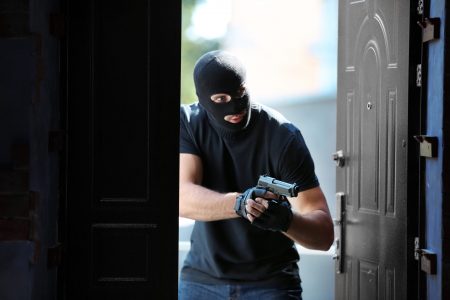Shelter in place and lockdown are both orders given by the local authorities when an emergency is underway and you need to take some kind of action to protect yourself. There are a lot of similarities between the two but there are also a lot of very important differences.
A shelter in place is called in response to a chemical, nuclear, or biological release and you need to take shelter for protection. Lockdown is called when there is an active shooter or a police emergency in the area that requires you to hide and take cover.
Keep reading to find out more about the differences and how to protect yourself!
Difference Between Shelter in Place and Lockdown
Shetler in place and lockdown are two different things that are put in place for different reasons. I see them getting confused in a lot of different areas. There are even local schools and colleges getting the info wrong on their websites that they expect their students to use as guidance.
Understanding the difference between the two makes sure that you’re taking the right action to protect you and your family in case you’re even in an area that has to shelter in place or lockdown.
Shelter in Place
Shelter in place is primarily designed to protect you from airborne chemicals.
When there’s an emergency that makes it too dangerous to go outside in an area, there may be a shelter in place order given by local, state or federal government agencies. An overturned semi transporting chemicals on the highway, a leak at a local factory or even a biological attack by terrorists could all trigger a shelter in place order.
What can cause a shelter in place:
- Industrial accident
- Chemical spill
- Break in a natural gas pipeline
- Materials transported through the community
- Terrorist attack
- Smoke
- Police activity
You can learn how to build a shelter in place kit here.
What to do During a Shelter in Place
When you’re told to shelter in place, it means that it’s safer for you to stay inside than it is to evacuate the area.
Shelter in place doesn’t always have the same meaning everywhere you go. Because of that, you have to understand why you’re being told to shelter in place.
If you’re sheltering because of a chemical or biological release or terrorist attack:
- Close all outside doors and windows.
- If it’s safe, turn off A/C and air handling systems.
- Eliminate all the ways that air can enter the building.
- Seal the room with duct tape and plastic.
- Remove any clothing that may have been contaminated with chemicals and seal it in plastic bags.
If you’re sheltering because of an active shooter or criminal action:
- Lock and barricade doors.
- Move away from outside doors and windows.
- Close window shades and turn off lights.
- Be ready to fight if you have to, but do not go looking for the shooter.
If you’re sheltering in place because of a natural disaster:
- Move away from outside windows and doors, as well as large glass objects.
- Avoid being underneath heavier objects that may fall.

Lockdown
Lockdown is called when there is an immediate threat in the building or nearby. The threat is usually a person with a gun or other weapon.
What can cause a lockdown:
- Active shooter
- Police activity in the area
- Suspected armed intruder
- Threats
- Someone shooting at a building from outside
A lockdown is designed to protect you from a person (or people) with a weapon who intends to start shooting or is already shooting. They’re normally inside the building but they can also be outside the building or in the immediate area.
Most active shooters are trying to shoot as many people as they can. You don’t have to know them in order to become a target for an active shooter.
What to do During a Lockdown
The action you need to take during a lockdown is pretty different than what you should initially do during a shelter in place.
What to do if there is an immediate threat:
- Run and get out of the area if you can. Have an escape route in mind, don’t just blindly run.
- Help others get out if you can.
- Keep others from going into that area once you’re safe and call 911.
- Once law enforcement arrives, keep your hands visible at all times and follow instructions from police officers.
What to do if there is no immediate threat in your area:
- Lock and barricade doors.
- Move away from outside doors and windows.
- Close window shades and turn off lights.
- Be ready to fight if you have to, but do not go looking for the shooter.
- Once law enforcement arrives, keep your hands visible at all times and follow instructions from police officers.
Conclusion
Shelter in place and lockdown are two different things. Sometimes shelter in place is called for different reasons, so you should try to understand why you’re being told to shelter in place.
Lockdown means that you need to hide and barricade yourself as quickly as possible. If you’re in danger you need to get out of the area! If you’re in a place where you’re not in danger, hide, and don’t draw attention to yourself.

